From the September 2023 issue of Apollo. Preview and subscribe here.
The fortunes of France’s immigration museum, the Musée National de l’Histoire de l’Immigration (MNHI), have always depended on the complexion of the government – at one moment a liberal administration defining itself against the far right, at another a conservative one trying to sound tough on immigration. The establishment of the museum – long campaigned for – was announced in 2004, two years after Jacques Chirac won the presidency in a second-round run-off against Front National leader Jean-Marie Le Pen. It opened very quietly under Nicolas Sarkozy in 2007, but the grand ceremony had to wait another seven years, until the election of the socialist François Hollande. In February 2021, Emmanuel Macron – elected on a ‘neither left nor right’ platform – named Pap Ndiaye, a historian of Senegalese and French descent, as the museum’s director, elevating him to education minister the following year, before sacking him in a reshuffle a few weeks ago.
Activists and historians first began to push for the creation of an immigration museum as far back as 1990. Several locations were proposed, among them the former Renault factory on Seguin, an island in the Seine near Boulogne-Billancourt in Paris’s western suburbs, where a great many migrant workers had been employed. It ended up in the Palais de la Porte Dorée – a vast art deco building which was conceived as the lasting monument of the Colonial Exhibition of 1931, a six-month-long advertisement for French colonialism that attracted millions of visitors. For Constance Rivière – who replaced Ndiaye as director in September 2022 – this location is an opportunity. ‘The challenge is as follows: how do we turn this centre of colonial propaganda into a place where we can reflect on our history?’, she told me when I met her there. Work to contextualise the Palais is still in progress, but Rivière hopes that in eight years’ time the building can host a permanent exhibition marking the centenary of the 1931 exhibition. ‘Visitors won’t be able not to know where they are,’ Rivière says.
The MNHI reopened in June, after three and a half years during which it underwent a major revamp. ‘Around ten years after the museum opened, and given that the history of migration is recent and still developing, there was a feeling that the exhibition needed an overhaul,’ Rivière explains. The historian Patrick Boucheron was commissioned to write a report on what a museum of immigration could be, which he co-authored with fellow historian Romain Bertrand and a 40-strong multidisciplinary team. No surprise that the resulting new permanent exhibition is packed. On the upper floor of the Palais, the area occupied by the MNHI permanent collection has almost doubled, and 80 per cent of the exhibits are new. The exhibits fall into three categories – historical documents (photographs and objects), contemporary art pieces (often acquired before the artists became well-known) and items – often donated by members of the public – that bear witness to specific historic moments.
Instead of the previous thematic exhibition, the new one is chronological, based on 11 dates in French history, beginning in 1685, the year of the Code noir – a set of laws that defined the practice of slavery in the French colonies and banned Jews from France’s Caribbean possessions – and the Edict of Fontainebleau, which banned Protestant worship, propelling hundreds of thousands of Protestants into exile. ‘This starting date allowed us to speak about slavery and about forced migration,’ says curator Emilie Gandon, ‘and to show we are talking about a country with varying borders.’
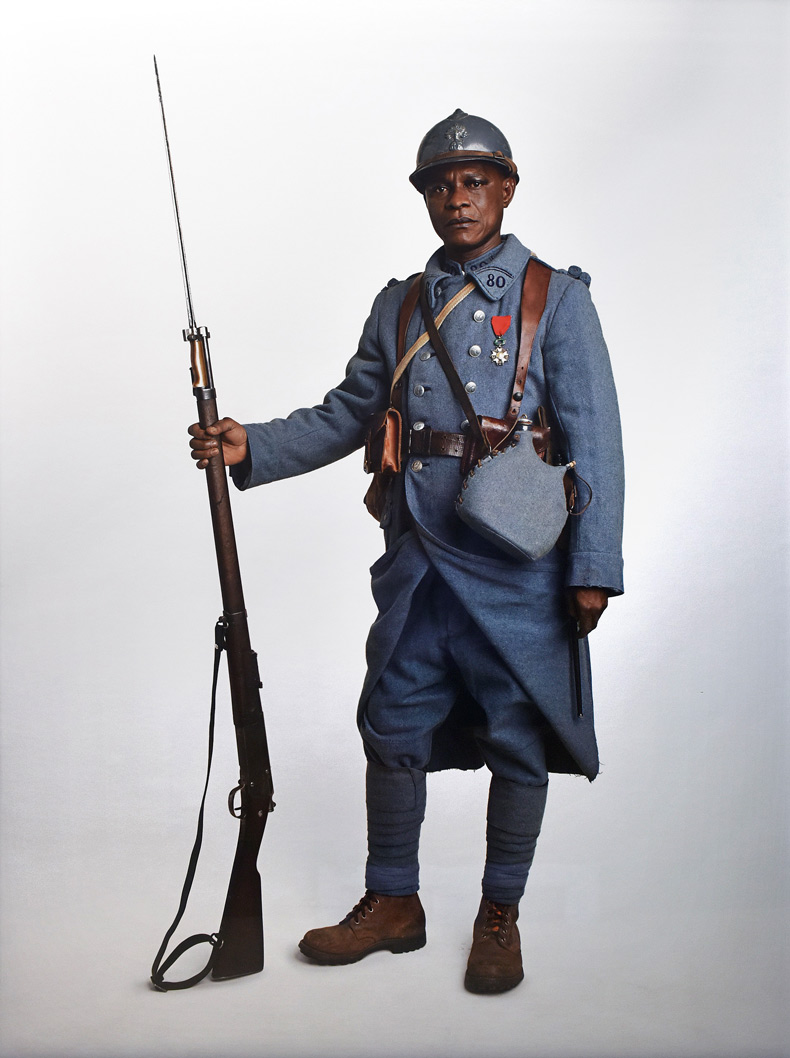
Allonzenfans, diptych #2 (2013; detail), Samuel Fosso. Musée national de l’Histoire et de l’Immigration, Paris. Courtesy MNHI © the artist
Throughout the exhibition, the links between immigration and colonialism have been made more explicit. Repeated cycles are made visible: moments when migrants were welcomed en masse because their labour was needed alternate with periods when France closed its doors. Again and again, particular groups of migrants have been shunned, stigmatised, mistreated and sometimes killed – in the second half of the 19th century, it was Italians who were perceived as impossible to integrate and accused of stealing jobs. The exhibition also includes contemporary pieces responding to historical events – such as photos from Samuel Fosso’s series of self-portraits Allonzenfans (2013), in which he wears the garb of African soldiers who fought for France in both world wars.
France usually takes an assimilationist view of immigration. At the museum’s inauguration in 2014, François Hollande said that its mission was ‘to show the continuous process by which the nation has integrated populations of foreign origin.’ The new displays paint a more nuanced picture, however. As we wander through the country’s history of immigration, we also discover more about how ‘Frenchness’ was invented, largely through the exclusion of groups considered not French. One thread tells the history of the administrative processes developed to designate and manage foreigners, which continues to this day.
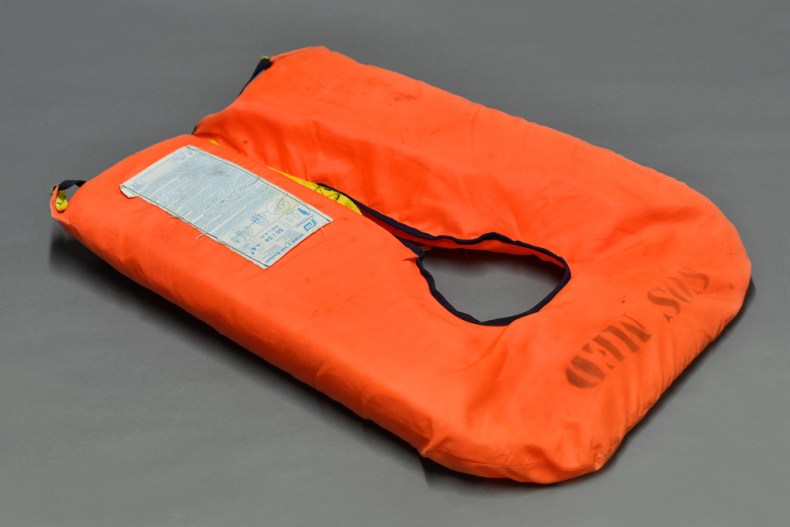
Life jacket from the Aquarius rescue ship, which operated between 2015–18. Photo: © EPPD-MNHI
As far-right ideas have pervaded French politics, the museum finds itself in a changed and difficult context. Visitors will find resonances between the collection and contemporary events, particularly in a room dealing with police violence and anti-racist struggles in the 1970s and ’80s. A photograph taken by Amadou Gaye in a Paris suburb in 1988 shows brown children in front of a wall on which someone has written: ‘We are all fodder for cops.’ Ten days after the MNHI reopened, on 27 June, Nahel Merzouk, a French 17-year-old of Algerian and Moroccan descent, was shot dead by a police officer in Nanterre. The killing led to widespread protests and uprisings; Pap Ndiaye, vocal about the denial of police violence before he became a minister, didn’t comment; on 19 July Macron sacked him from government, a move that some saw as an attempt to appease the far right.
The last section of the exhibition is called ‘Present time’. There are objects from the Aquarius, a rescue ship which saved thousands of migrants from drowning in the Mediterranean until it had to end operations in 2018, after European governments, including France, refused to support its efforts. This autumn, Macron’s government will put forward a new and harsher immigration bill which proposes streamlining the expulsion of unwanted migrants and restricting the rights of foreign residents and asylum seekers – the 29th bill since 1980 attempting to limit immigration to France. It seems likely that a museum launched to change the perception of immigration will be condemned to continue documenting France’s increasingly hostile immigration policies.
From the September 2023 issue of Apollo. Preview and subscribe here.
Unlimited access from just $16 every 3 months
Subscribe to get unlimited and exclusive access to the top art stories, interviews and exhibition reviews.

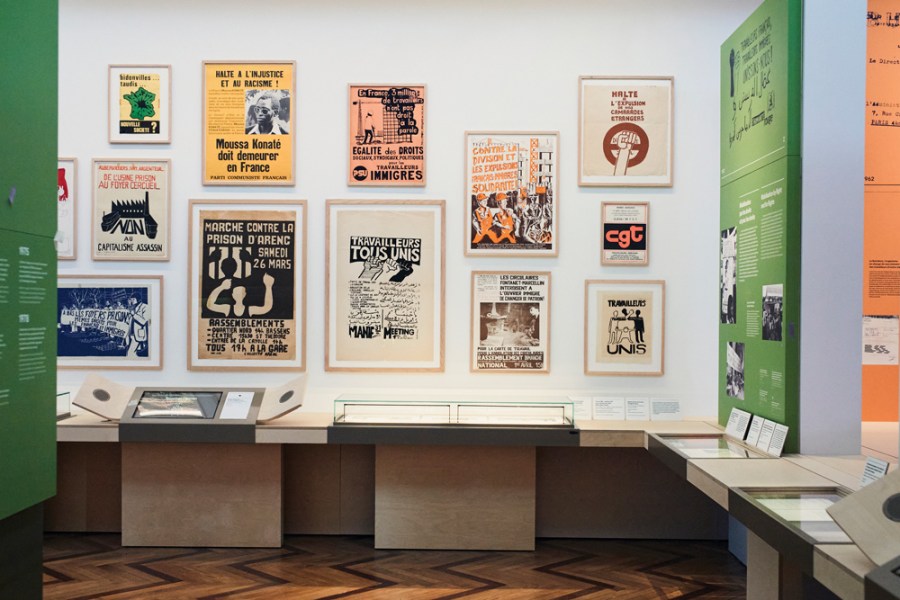
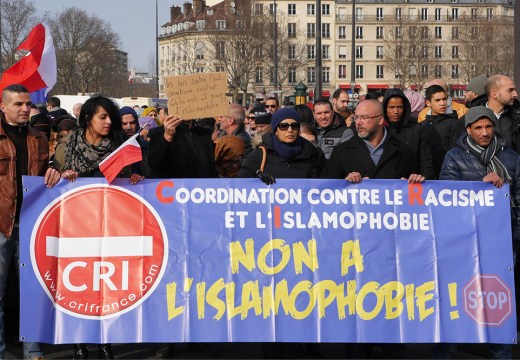
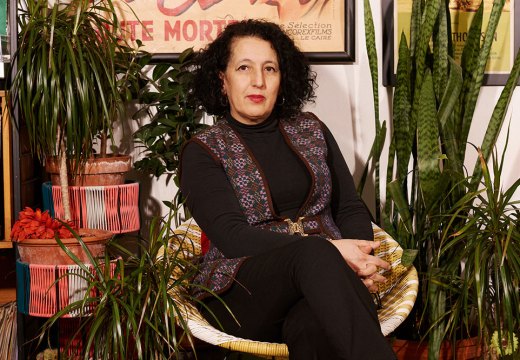
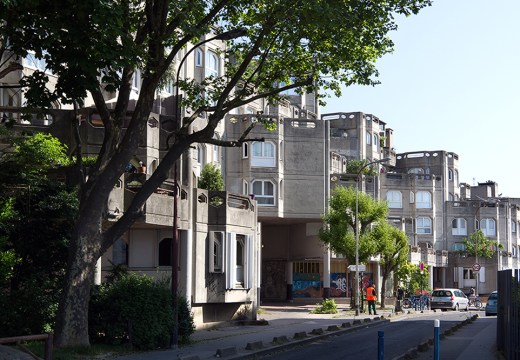









![Masterpiece [Re]discovery 2022. Photo: Ben Fisher Photography, courtesy of Masterpiece London](http://www.apollo-magazine.com/wp-content/uploads/2022/07/MPL2022_4263.jpg)
Has arts punditry become a perk for politicos?